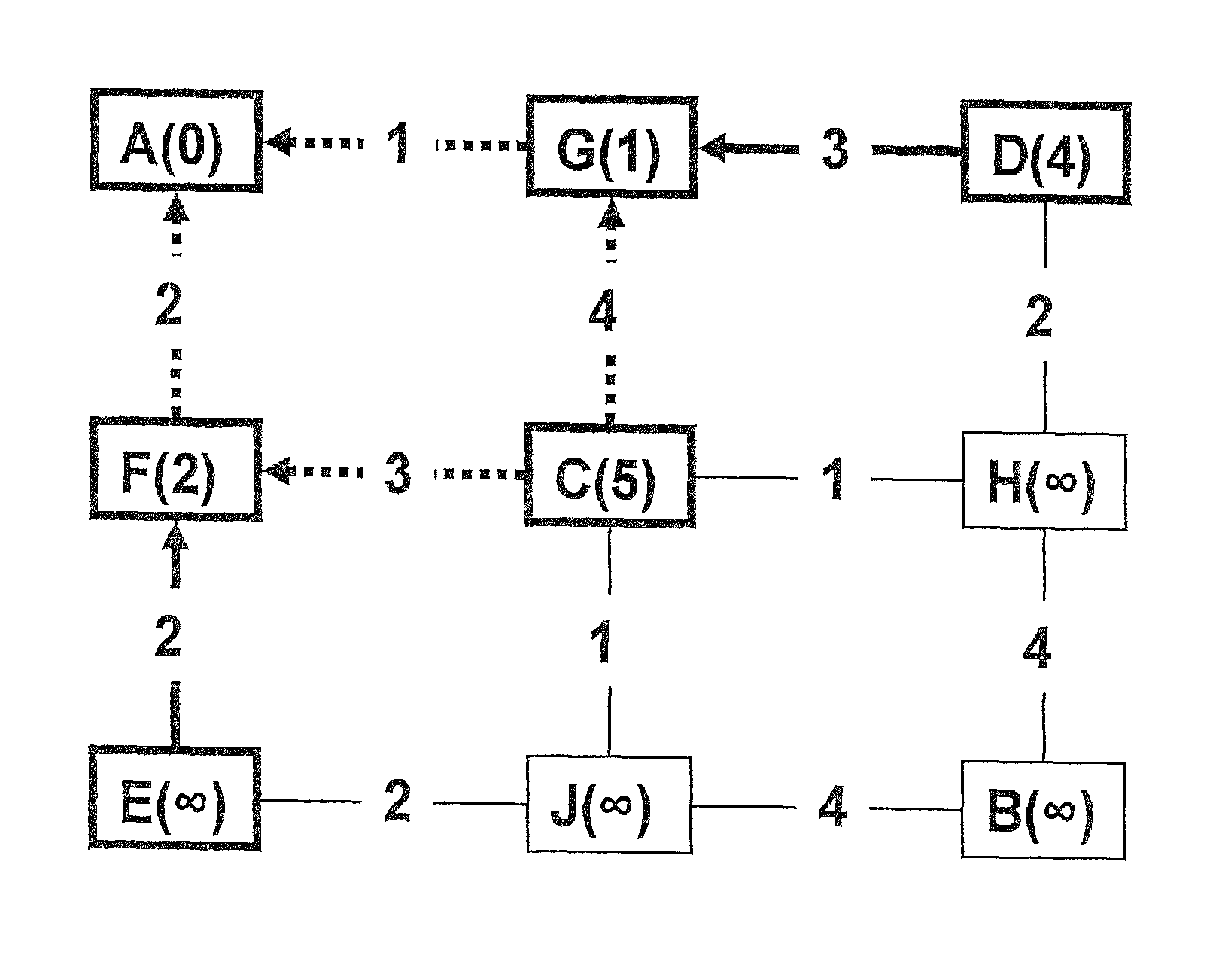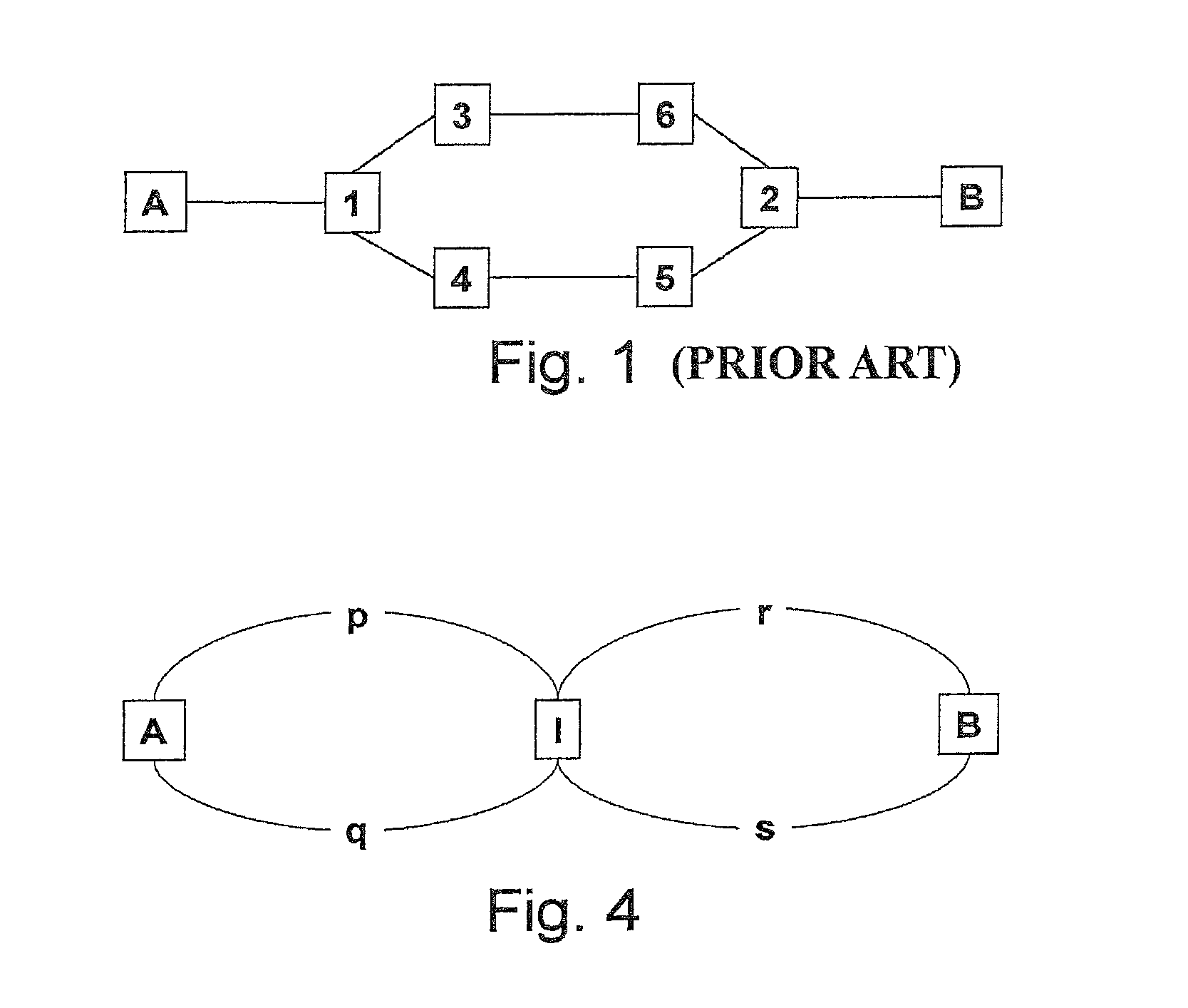Tie-breaking in shortest path determination
a technology of shortest path and tie-breaking, which is applied in the field of packet forwarding communications network, can solve the problems of inconsistent shortest path computations made by nodes a and b, inability to ensure the direction of a flow, and slow election process
- Summary
- Abstract
- Description
- Claims
- Application Information
AI Technical Summary
Benefits of technology
Problems solved by technology
Method used
Image
Examples
first embodiment
[0048]a consistent tie-breaking algorithm will now be described. This algorithm begins by forming a path identifier for each path. The path identifier is an ordered list of the identifiers of each node traversed by the path through the network. The node identifiers are sorted in lexicographic order. The path identifier is the resulting concatenation of the ordered node identifiers. FIG. 6 shows an example network, with end nodes A, B and intermediate nodes 0-9. A first path (along the top of FIG. 6) between nodes A and B traverses nodes having the node identifiers A-0-5-6-1-4-8-B. After ordering the list of node identifiers in ascending lexicographic order, the path can be represented by the path identifier 014568AB. This construction ensures that a path and its reverse will have the same path identifier. Furthermore, because the algorithm is only dealing with shortest paths or nearly shortest paths, only two paths—the direct path and the corresponding reverse path—can share an iden...
second embodiment
[0066]So far this description assumes that the algorithm is non-local and that tie-breaking is performed after all the equal-cost paths have been found. However, it has been found that a local version of this algorithm can produce the same results by considering only the nodes on the diverging branches. Indeed, the tie-breaking result depends only on the relative positions of the smallest node identifier in the diverging branches. a consistent tie-breaking algorithm can be summarised as:
[0067]1) Find the node identifier in the diverging branch of the first path which meets a first selection criterion. This can be considered a branch identifier for the first path;
[0068]2) Find the node identifier in the diverging branch of the second path which meets the first selection criterion. This can be considered a branch identifier for the second path;
[0069]3) Select one of the paths using a second selection criterion, which operates on the branch identifiers selected by steps (1) and (2).
[00...
PUM
 Login to View More
Login to View More Abstract
Description
Claims
Application Information
 Login to View More
Login to View More - R&D
- Intellectual Property
- Life Sciences
- Materials
- Tech Scout
- Unparalleled Data Quality
- Higher Quality Content
- 60% Fewer Hallucinations
Browse by: Latest US Patents, China's latest patents, Technical Efficacy Thesaurus, Application Domain, Technology Topic, Popular Technical Reports.
© 2025 PatSnap. All rights reserved.Legal|Privacy policy|Modern Slavery Act Transparency Statement|Sitemap|About US| Contact US: help@patsnap.com



